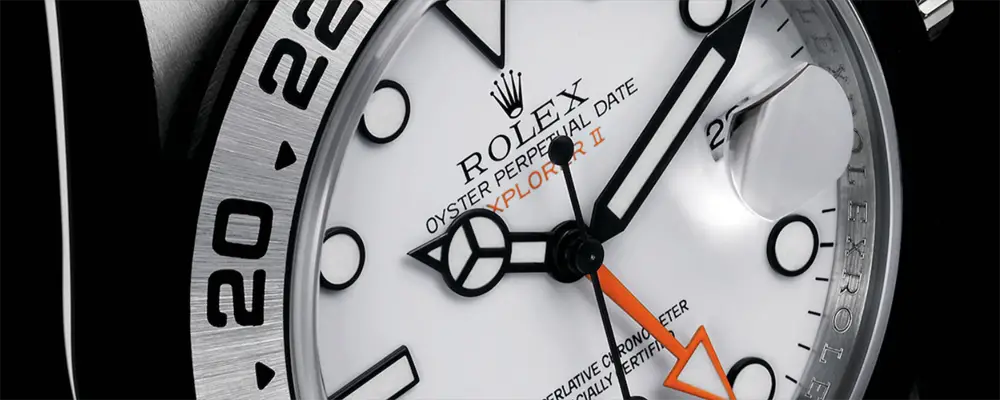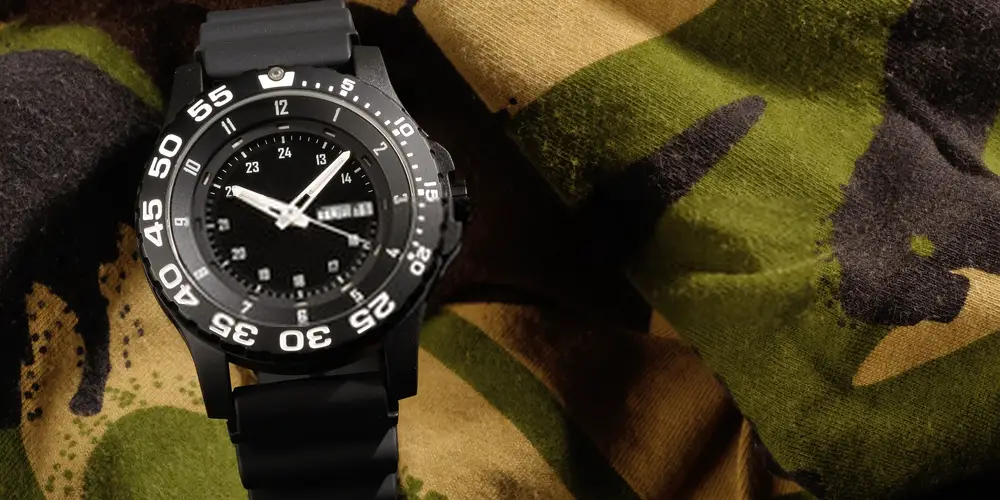[toc]
Grab a beer, lie back on the sofa and take a look at this article. If you’re in the market for a Rolex Explorer II but can’t decide which model to choose, this side-by-side comparison review of the Rolex Explorer II ref 16570 and the Rolex Explorer II ref 216570 should help you make that decision. Instead of providing you with a review that outlines the advantages of one watch compared to the disadvantages of another, we’re going to show you how each of these Rolex Explorer II models has its own unique set of features, making it a worthy contender for adding to your collection.
Rolex watches aren’t normally an impulse buy, but if they were, you needn’t worry. The good news is that both the 16570 and 216570 are investment pieces. You can’t go wrong with a Rolex. But for comparison purposes and to make it easier for you to define which watch out of the two is best for you, here is our Rolex Explorer II 16570 vs. the Rolex Explorer II 216570 watch review
Here’s a quick fact for you; Rolex originally intended the Explorer II watch to appeal to spelunkers, mountain climbers, and even Polar region exporters. But the addition of an in-house movement that enabled the 24-hour hand to be moved independently (and used in conjunction with the 24 hour fixed bezel) made it a companion for forwent travelers.

Over the years, we have seen the Rolex Explorer II go from a zesty orange 24-hour hand to a red-coated one, before returning to the iconic orange hand once again. The model was only ever developed in stainless steel but featured a white dial option instead of the original Rolex Explorer with a black dial. Its crisp white markings against an ice white backdrop gave it the nickname “The Polar” watch.
The Rolex Explorer II is equipped with several innovative tools to enhance precise timekeeping along with a highly legible display. Inspired by Everest mountain climbers, the Rolex Explorer paved the way for the Explorer II, retaining many of its distinct fractures. The original Explorer was considered more a dress-style watch than anything else, but the Explorer II turned that misinterpretation on its head.
The case of the Explorer II was bigger and bolder and integrated with a brand new movement, packed with innovative qualities. Anti-magnetic and shock-absorbent elements meant that it could conquer any challenge it was faced with.
After the original Explorer, the Rolex Explorer II 16570 boasted a near-on indestructible 40mm design crafted from stainless steel. It was manufactured for a total of 22 years between 1989 – 2011. Its utilitarian design was a hit with both collectors and adventurists worldwide.
Sported on the wrist of Prince Harry, it was also a statement piece, and for its price point, well, you certainly couldn’t turn your nose up at it. Although it wasn’t intended to be a dual watch, it served the same purpose as the Rolex GMT-Master watch, albeit without the rotating bezel. It mirrored the same Mercedes hands and geometric lines that the GMT model did.
The Rolex Explorer II 16570 boasts black outlines around the Polar dials’ details, enabling them to stand out against the white dial. The case of the 16570 measures 40mm. It has a thickness of 12.2mm, which, despite its heftiness, is still a comfortable fit for a slender wrist. The fact that the 16570 is ideally sized means it’s suitable for all sorts of outdoor challenges, be that mountain climbing, caving, polar exploration, or traveling.
Before 2006 the Explorer II 16570 was powered by the Calibre 3185. Post-2006, you’ll find the watches beat to the rhythm of the updated Calibre 3186. Both sturdy movements offer a 48-hour power reserve, but the new hairspring on the 3186 promised a smoother overall performance, reducing any wobble from the GMT hand. The luminescence of the 16570 also underwent an overhaul during the mid-2000s, changing from Tritium to LumiNova and then to Super-LumiNova.
Let’s take a look at the features of the Rolex Explorer II ref 16570:

Years of production: 1989 – 2011
Case Size: 40mm Oystersteel
Water Resistance: 100 meters
Dial: Black or white
GMT Hand: Thin red
Movement: 3185/3186; with dual time and date
Lume: Tritium/LumiNova/Super-LumiNova (glows green)
Bracelet/Clasp: Hollow center links; Fliplock clasp
2011 marked the 40th anniversary of the Explorer II, and so the model ref 216570 was created. Its most noticeable difference was its larger case size of 42mm, giving the timepiece an overall bulkier and robust feel. Broader hands and bigger indexes were also introduced onto the dial and more pronounced markings on the bezel.
The dial returned to the orange-coated 24-hour hand, along with a much more dramatic blue glow from the watch’s Chromalight details on the dial, further enhancing legibility during night time hours.
The Oystersteel bracelet integrated into the case of the Rolex Explorer II 216570 featured solid center links with a folding Oysterlock safety clasp and an Easylink 5mm comfort extension system. This feature replaced the classic Fliplock clasp of the 16570 model.
The in-house made Calibre 3187, this time, featured a Parachrom hairspring but also Paraflex shock absorbers for even greater resistance to the knocks and bumps associated with extreme adventuring. To sum up, the Rolex Explorer II 216570 was bigger and bolder than the 16570, with a more readable dial, a smoother, sturdier movement, and a more robust Oystersteel bracelet.
Let’s look at some of the neat qualities of the Rolex Explorer II ref: 216570:

Years of production: 2011 – Present
Case Size: 42mm Oystersteel
Water Resistance: 100 meters
Dial: Black or White
GMT Hand: Fat; Orange
Movement: Calibre 3187 featuring a dual time and date. 48-hour power reserve.
Lume: Chromalight
Bracelet/Clasp: Solid center links; an Easylink extension and a Oysterlock safety clasp
Since its introduction, there have only ever been four models created for the Explorer II range. Although different in many ways, these sporty stainless steel models offer the wearer a solid set of qualities for extreme exploration, venturing, and traveling. They both include stainless steel Oyster cases and Oyster bracelets, the option of black or white dials, and dual time functionality.
The decision to make when weighing up both models, however, is whether those modifications to the movement, along with a larger case sizing, are more important to you than a collectible design from Rolex’s historical catalog.











